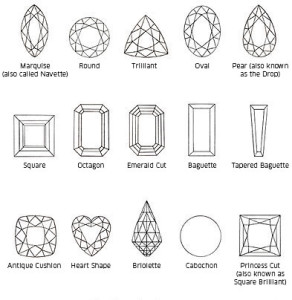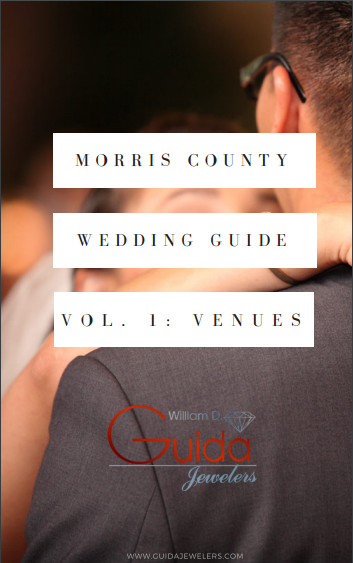
You may have considered getting a piece of jewelry – a diamond ring perhaps – appraised, or maybe you’ve simply wanted to learn more about a gemstone on a piece of jewelry that you own. If you’ve been in either situation, you’ve most likely come across a jewelry lab report, commonly known as a jewelry identification report.
If you want to get a piece of jewelry appraised, or if you’ve already gotten a piece of jewelry appraised and want help deciphering the lingo on your jewelry identification report, Guida Jewelers can help. Come stop by our showroom in Denville, NJ so one of our jewelry experts can help you to understand your jewelry identification report.
For a brief overview, we’ve provided a breakdown of common parts of jewelry identification reports, so you can get a general idea of what your report tells you about your piece of jewelry.
What Is a Jewelry Identification Report?
A jewelry identification report simply tells you everything you need to know about your piece of jewelry’s gemstone in regards to the carat, weight, color, origin, details, and more. Most often, qualified experts provide impartial analyses of a piece of jewelry and its gemstones. Proof is provided through documentation and pristine photographs of the item.
What’s So Special About a Jewelry Identification Report?
A Jewelry Identification Report, most commonly issued by the International Geological Institute, helps to provide a real value for the gemstone and piece of jewelry that you own.
In addition to a piece of jewelry’s intrinsic value, a jewelry identification report can tell you the quality of the gemstone through the eyes of expert jewelry appraisers and, potentially, its monetary value.
A jewelry identification report will not tell you how much exactly a piece of jewelry is worth; however, the information on a jewelry identification report can provide documentation for appraising, which can tell you how much a piece of jewelry is worth in dollars.
Parts of a Jewelry Identification Report
Here is an example of a jewelry identification report.
Below the header section is where the report officially begins. You will see the report number and the date of the identification.
Below that will be additional information about the gemstone, in addition to a high quality image of the gemstone.
1. Description
The description on a jewelry identification report briefly describes the piece of jewelry being examined and includes details about its weight, the metal type, and the gemstones included.
2. Main Stone
The main stone section is self-explanatory in its purpose, but each sub-section deserves an explanation. After providing the name of the gemstone, additional details about the stone are provided.
Species:
Just like plants and animals below to species, gemstones belong to certain species, as well. Most gems are minerals, with a few exceptions, so most gemstone species will be a type of mineral.
On a micro-level, a species is determined by looking at both a gem’s chemical makeup and crystal habit. This can be simplified when you consider diamonds and graphite both have identical chemical makeups (i.e. they’re made of Carbon). Where they differ is in their crystal habits.
On a macro-level, there are numerous species and identifying which species a gem belongs to is just a matter of further identifying a specific gem.

Source: Rocks and Co.
Shape and Cut:
The shape and cut of a gemstone is very important as it is not only an artform in and of itself, it is the way to unlock the true beauty and elegance of a gemstone.
The shape and cut of a gemstone will effect the shine, color and brilliance of a gemstone, so it is very important to consider how a gemstone is shaped and cut.
Measurements:
The measurement of a gemstone is usually something like 3 x 6 x 2 mm, that is, a gemstone measured at 3 mm long, 6 mm wide, and 2 mm deep. If, however, the gemstone is round, then it will only have two measurements, the length and the depth (since the length and the width are the same for round gems).
While it is the color, cut, clarity, and carat of a gemstone that determines its monetary value most often, other factors, including size, can effect the assigned value.
Estimated Carat Weight:
A carat is specifically used as a weight measurement for gemstones and is equal to 200 milligrams.
Don’t mistake a carat of something like a diamond for what is commonly used to describe gold. 14KT gold is the number of parts of a metal out of 24 that is actually gold. A carat that describes a gemstone is purely a measurement of its weight, just like ounces and pounds are units of weight measurement.
Therefore, a higher or lower carat for a gemstone does not mean a better or lesser gemstone, it is simply another factor that further describes a gemstone and which may have an impact on its monetary value.
Color and Transparency:
The color and clarity of a gemstone are very important. On the most basic level, the purer the color and clearer the gemstone, the better it is. While not usually visible from the naked eye, a close examination of a gemstone can reveal very tiny imperfections such as fractures that may change the prescribed value of a gemstone.
Characteristics:
Characteristics take a look at the inside of the gemstone and further describe the stone on a micro-level and can greatly effect the value of a gemstone. Very often you will see something like “natural inclusion pattern,” which simply means that there are expected (i.e. “natural”) imperfections within the gem.
For diamonds, the inclusions can make the difference between a clear, brilliant diamond, or a cloudy one. In other gems, however, inclusions can actually add value to the gemstone. Regardless, inclusions are one of the most important factors in prescribing a value to a gemstone.
Comments:
This section allows the appraiser to add any additional notes worthy of mentioning and are specific to each appraisal.
3. Side Stones
On a piece of jewelry, such as a ring or necklace, if there are additional gemstones, these will also be examined and prescribed a value. The value of the side stones may add to the overall value of the piece of jewelry.
Knowing Your Jewelry and Understanding Jewelry Identification Reports
Knowing the value of your jewelry is important for many reasons, from personal value to monetary value.
As we mentioned in the beginning, Guida Jewelers can happily assist you in understanding your jewelry identification report. We can explain your report thoroughly and answer any questions you may have.


Recent Comments